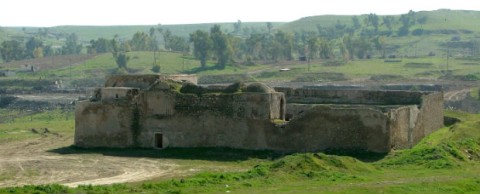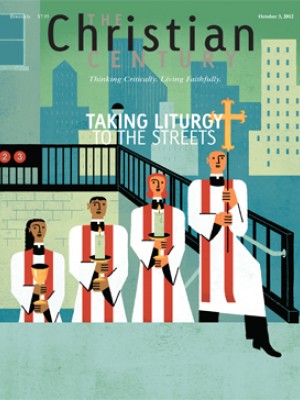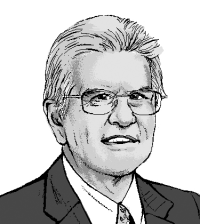Patriarchs of Babylon

Over a thousand years separate the parallel lives of two men who were each, in very different ways, important Christian leaders of their time. The two held very similar offices but in circumstances that had radically, tragically altered through the years. Placing the two lives side by side gives us a lesson about the sweep of Christian history outside the West.
In my book The Lost History of Christianity, I described the great Eastern churches that continued to flourish through the Middle Ages, usually while living under the power of Islamic regimes. Chiefly based in what is now Iraq and Turkey, they maintained a dazzling network of spiritual and intellectual centers far above anything to be found in contemporary Western Europe.
Read our latest issue or browse back issues.
In telling that story, I focused on Timothy, patriarch of Babylon and head of the Church of the East, the so-called Nestorians, who reigned from 780 to 823. Although Timothy was contemporary with the legendary Western Emperor Charlemagne, he represented a totally different cultural world and a radically distinct geography. By 800, the Church of the East constituted at least a quarter of the world’s Christians in a territory that stretched from the Mediterranean deep into Central Asia, China and southern India. From his patriarchal seat in Baghdad, Timothy appointed a new bishop for Tibet and another for the Turks, who then lived in deepest Siberia.
At a time when the intellectual life of the Latin West was severely limited, Timothy still had access to much of Greek antiquity and the Syriac Fathers. He wrote and translated a great deal in his own right in philosophy, law, theology, liturgy and astrology. Reading his correspondence, it almost seems as if the classical world had never perished. And all this took place under the rule of Islamic caliphs and generals. Timothy himself had a famously civilized debate with the caliph himself about the rival claims of the two faiths. Timothy presided over a golden age for his church.
By far the best source for Timothy’s career is his letters, which are collected and summarized in an excellent French edition published by a Vatican press in 1956 (and never translated into English). The letters themselves give a fascinating account of the day-to-day politics of a patriarch in a church that makes the word Byzantine seem too gentle: his patriarchal predecessor was poisoned over a land dispute.
What gives that 1956 book its poignant quality is the fact that it was edited by a brilliant young scholar named Raphael J. Bidawid, who both continued Timothy’s story as patriarch of Babylon and witnessed the years in which that story was coming to an end.
Bidawid, like Timothy, came from northern Iraq, from the ancient Christian center of Mosul, and he too belonged to the tradition of the Church of the East. Between the eras of the two men the church passed through terrible trials. In the 14th century it was irretrievably ruined by a series of persecutions, wars and natural calamities, and the church later split into two factions—the Chaldeans, who accepted papal rule, and the Assyrians, who maintained independence. Even when combined the two groups could muster only a couple of million believers worldwide in modern times.
This was the situation that Bidawid knew when he was researching Timothy in the 1950s, at a time when his Chaldean church could count perhaps half a million members in all. He became a bishop in 1957—the youngest Catholic bishop of his time—and in 1989 he was elevated to the magnificent-sounding office of patriarch of Babylon of the Chaldean Catholic Church. In a sense, he was Timothy’s lineal descendant in Baghdad.
But what totally different worlds they knew! If Timothy was a global statesman, Bidawid was utterly constrained by the circumstances of a tiny denomination in the paranoid and violent Iraq of Saddam Hussein, in which all that mattered was communal survival. And if Timothy knew Muslim rulers as protectors and friends, Bidawid rightly feared Islamists as deadly enemies and potential persecutors.
Whatever his personal feelings, the new patriarch clung to Saddam as a bastion against Islamist rule and a protector of Christians. (The powerful foreign minister of Iraq, Tariq Aziz, was a Chaldean.) When Saddam invaded Kuwait in 1990, the patriarch wholly supported the action and condemned global criticisms. Until his death in 2003, shortly after the U.S.-led invasion, he combined loyal support for Saddam with heroic efforts to defend and feed his Chaldean followers. But in the long term, his efforts were doomed, and the Chaldeans have indeed been primary targets of Islamist violence. Soon the church may have few followers remaining on Iraqi soil. Bidawid himself died in Beirut.
Reading Bidawid’s book of Timothy’s letters, then, we see a church in its greatest glory—and we also contemplate its end.







